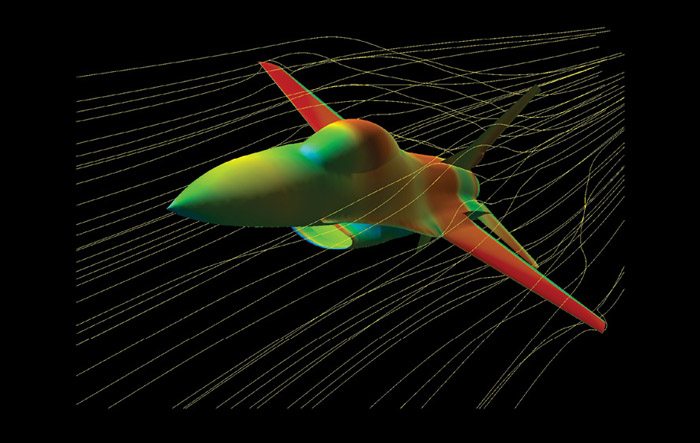Power quality. Power-quality studies at network level deal with the transient voltage levels on distribution bus bars including extreme conditions like heavy load switching, high power demand from dynamic loads and bus-bar transfers. They also study steady-stage voltage harmonic content on distribution bus bars with special focus on total harmonic distortion and harmonic spectrum. Major issues that crop up are the integration of non-linear models and the ability to start the simulation from any steady-state condition.
Failure-mode effects analysis (FMEA). Modern aerospace systems are dependent on electrical control. Design teams must understand how electrical failures affect system performance. A good simulator can be used to simulate and analyse systems under electrical fault conditions. A matrix of faults representing electrical device failures (e.g., system shorts or opens) is automatically created to evaluate system performance during each fault condition. Fault reports are automatically generated and used to assess the reliability of the complete design.
Robust design methods. Robust design methodologies help aerospace design teams identify, and compensate for, the effects of parameter change on aircraft system performance. An advanced analysis (sensitivity, parametric, statistical, stress) gives design teams the tools needed to implement robust design techniques. With this analysis, design teams can identify the parameters that affect system performance the most, establish tolerances for the most critical parameters, investigate how performance is affected by random changes in tolerances, and analyse operational stresses placed on system components.

Advantages of Saber
Saber assists designers in developing a robust and accurate simulation platform through the use of multi-level modelling (functional and behavioural) along with the integration of complex electrical and multi-physics models. It helps you deal with the major issues that crop up during simulation, such as the increase in complexity as you work with almost a hundred thousand variables and more than 200 thousand components and sub-systems.
Most of the newer aircraft models have a non-metallic fuselage (carbon fibre is the preferred alternative). Due to this development, it has become paramount that the simulation tool takes this development into account. The tools should be able to handle operations at low frequency while being proficient at handling the current distribution in ESN, current leakage in the carbon fibre and ground voltage fluctuation.
Saber’s easy-to-use design editor gives engineers the ability to design and simulate complete aerospace systems at any level of design hierarchy. Design teams can choose parts from its large model library, or easily integrate their own models into the system. Once the design is complete, a detailed analysis can be accessed directly from the design editor. Simulation results can be overlaid on the schematic for quick viewing, or loaded into Saber’s waveform analyser for detailed analysis. Saber accurately sizes system components to match energy generation with corresponding consumption along with eliminating surprises in power network loading and distribution through early verification. The simulator also enables design portability using industry-standard VHDL-AMS and MAST languages, thereby making sure it is the one-stop solution for all the simulation needs.
The author is a tech correspondent at EFY Bengaluru






